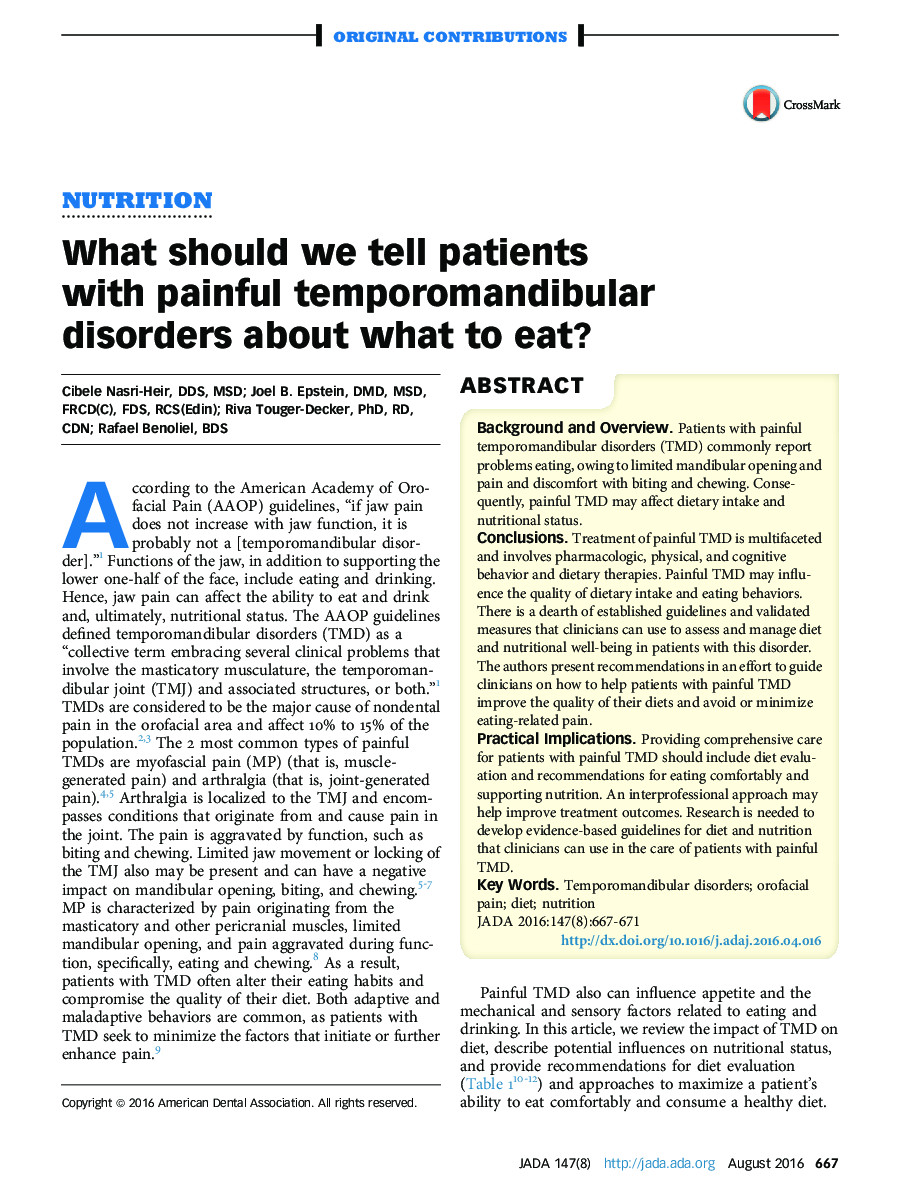| Article ID | Journal | Published Year | Pages | File Type |
|---|---|---|---|---|
| 3136524 | The Journal of the American Dental Association | 2016 | 5 Pages |
Background and OverviewPatients with painful temporomandibular disorders (TMD) commonly report problems eating, owing to limited mandibular opening and pain and discomfort with biting and chewing. Consequently, painful TMD may affect dietary intake and nutritional status.ConclusionsTreatment of painful TMD is multifaceted and involves pharmacologic, physical, and cognitive behavior and dietary therapies. Painful TMD may influence the quality of dietary intake and eating behaviors. There is a dearth of established guidelines and validated measures that clinicians can use to assess and manage diet and nutritional well-being in patients with this disorder. The authors present recommendations in an effort to guide clinicians on how to help patients with painful TMD improve the quality of their diets and avoid or minimize eating-related pain.Practical ImplicationsProviding comprehensive care for patients with painful TMD should include diet evaluation and recommendations for eating comfortably and supporting nutrition. An interprofessional approach may help improve treatment outcomes. Research is needed to develop evidence-based guidelines for diet and nutrition that clinicians can use in the care of patients with painful TMD.
